1: Panerai Family, early 1900s
This family portrait introduces the key figures in our story: Guido with his wife Guglielmina, and their children Giuseppe and Maria.
根据导航信息,我们设置了以下地区及货币:
China - ¥
如果您希望更改,可以选择不同的设置。
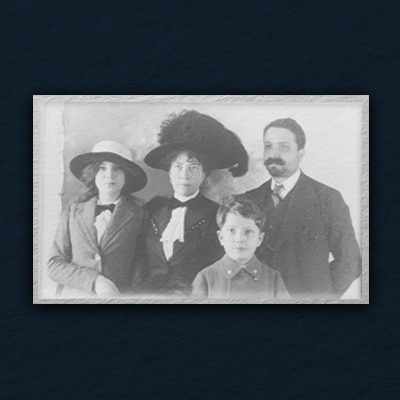
This family portrait introduces the key figures in our story: Guido with his wife Guglielmina, and their children Giuseppe and Maria.
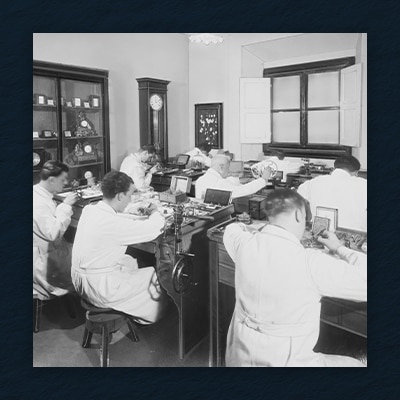
Orologeria Svizzera employed trusted watchmakers who assembled and repaired all watches on the first floor before they were sold.

Thanks to the technical skills developed through the family’s watchmaking operations, Panerai secured the contract to produce watches for the Italian Navy’s frogmen.
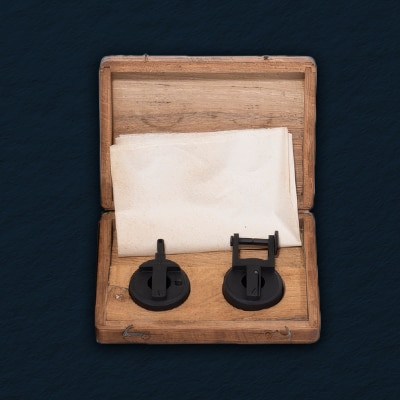
Early 20th-century aiming tools, enhanced with Panerai’s Radiomir paste for night visibility. Adopted not just by the Italian, but also French, British, and American forces.
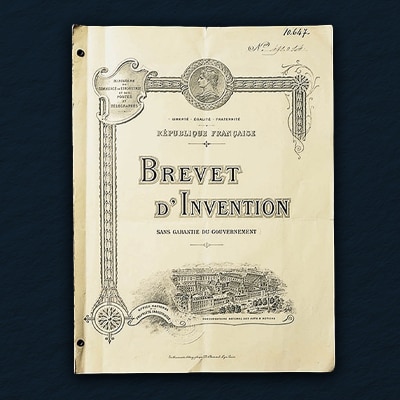
The French patent marks the first use of “Radiomir,” the luminous paste invented by Panerai. Made with radium, it enabled visibility in total darkness for high precision tools.
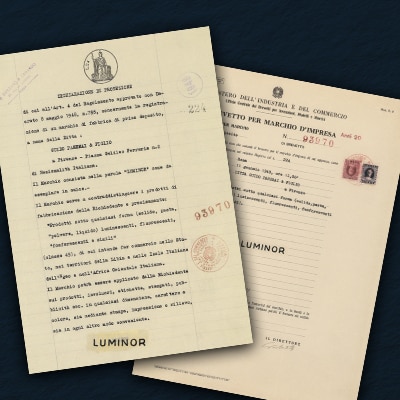
Developed on the Navy’s request in 1940s, Luminor, a safer tritium-based compound was made. From the 1960s, it replaced radium; by 1971, all radioactivity was eliminated.
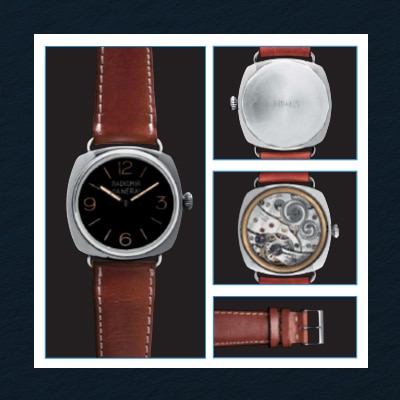
The Bakalite dial, exposed to heat and light, caused the discs to expand, jamming the hands. So then, Panerai moved toward more reliable solutions through technical evolution.
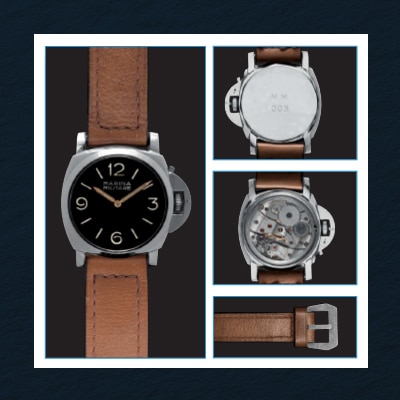
A special series produced for the Italian Navy in the early 1960s that were used for training exercises conducted at the Varignano training facility in La Spezia.
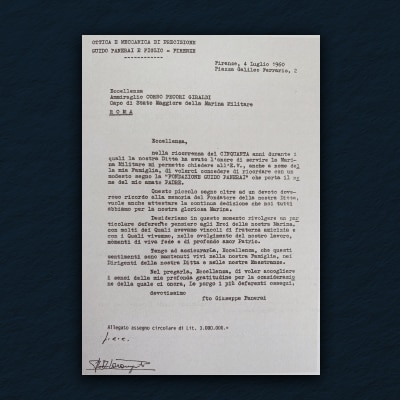
Dated 1960, this letter verifies the 50 years of collaboration with the Italian Navy. Panerai supplied tools since the 1910s, continuously evolving to meet different needs.
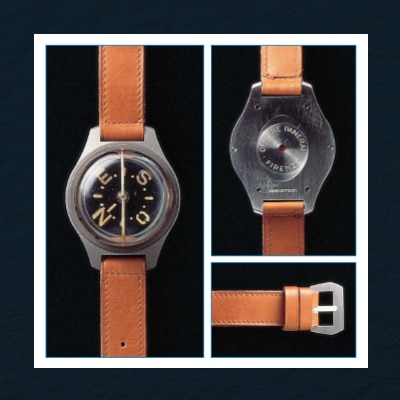
An underwater navigation tool with luminous markings—first Radiomir, then Luminor. It requires the diver to hold their arm horizontally to check their orientation.
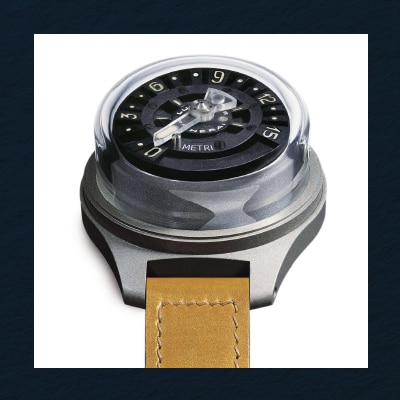
Part of the diver’s kit since the 1940s, this gauge measured underwater depth. Panerai produced several models with depth ranges spanning from 7 to 50 meters.
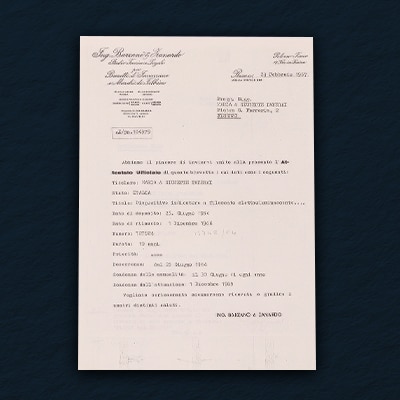
Among Giuseppe Panerai’s most successful inventions is the Elux technology: used from the 1960s in flashlights, indicators, electric signal devices, and precision instruments.
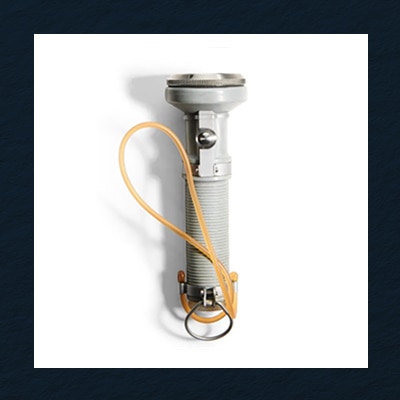
An underwater flashlight using a cold light Elux Panerai panel to emit signals undetectable by infrared. Powered by a dry battery, it illuminated nearby areas without heat.
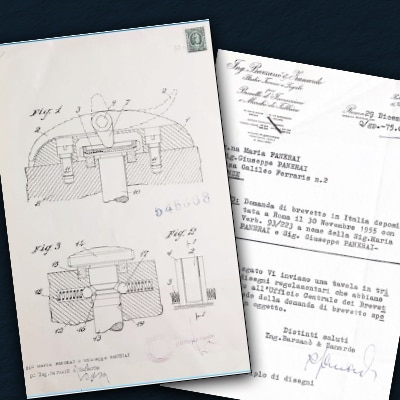
Installed and patented for the GPF 2/56 ‘Egiziano’, this device locks the crown to enhance water resistance for underwater missions: a hallmark of Panerai’s design.
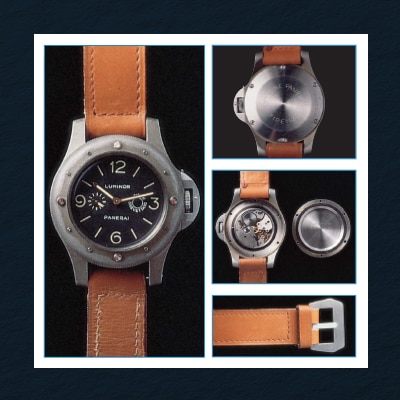
Panerai’s first fully designed watch featured the 8 Days Angelus SF 240 movement, bidirectional rotating bezel and crown protecting bridge which debuted for the first time.
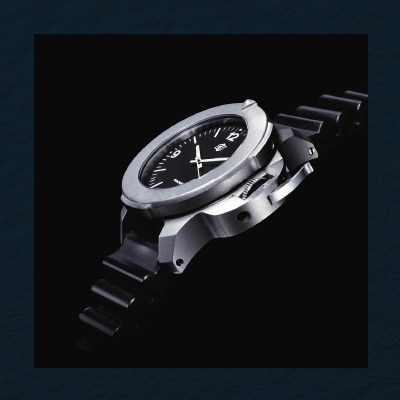
Tested to 1000m, this prototype was Panerai’s first automatic watch and among the first in grade 5 titanium. Considered outdated by the Navy, it never entered production.
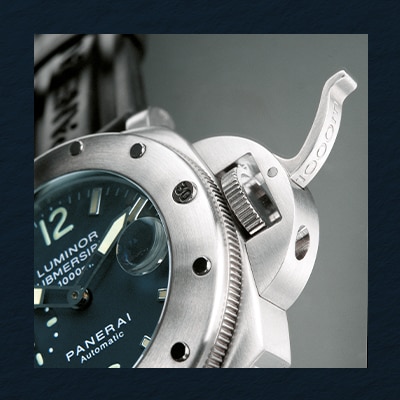
These models debuted escape valves to rebalance helium gas that forms inside the case—developed by the Laboratorio di Idee to withstand extreme high pressures.

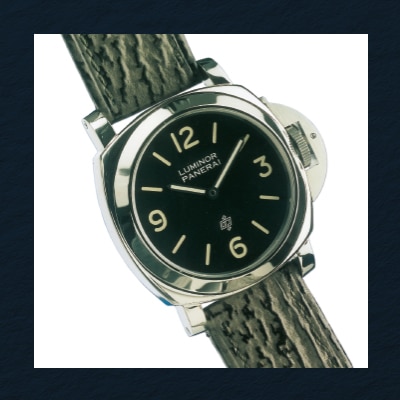
Part of the first civilian collection in 1993, this model introduced the now-iconic 44 mm case and featured the OP (Officine Panerai) logo, earning the name “Luminor Logo.”
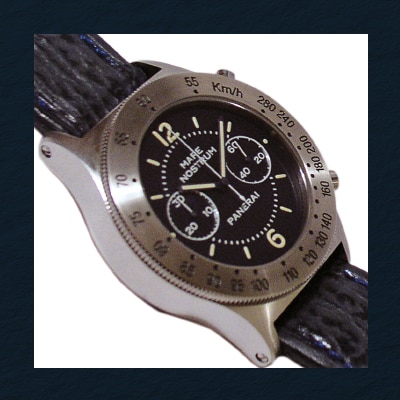
Inspired by the 1943 prototype proposed by Panerai to the Navy, the Mare Nostrum chronograph marked Panerai’s move to include civilian chronographs in its offering.

A rare “non-matching” effect: dial and hands in different tones due to unexpected chemical reactions. Developed for military use, PVD coating reduced glare for tactical use.
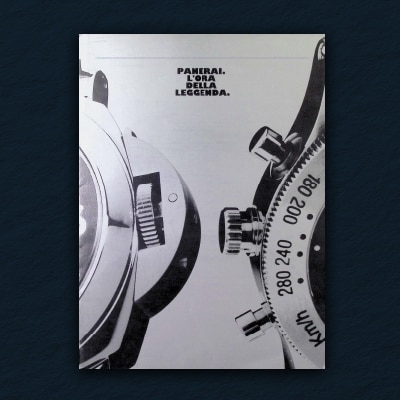
First example of an Officine Panerai advertising brochure with a detailed description of the three references from the 1993-1994 collection.
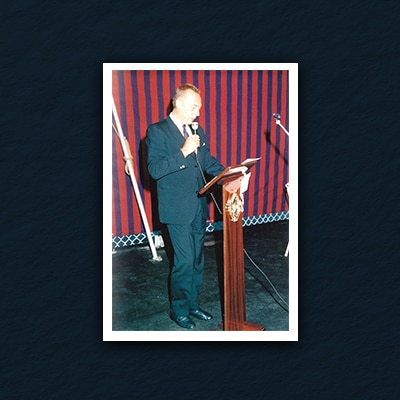
Amedeo of Savoia Aosta, son of duke Aimone di Savoia, who served as the head of the Italian Navy’s commando unit from the late 1930s until 1943.
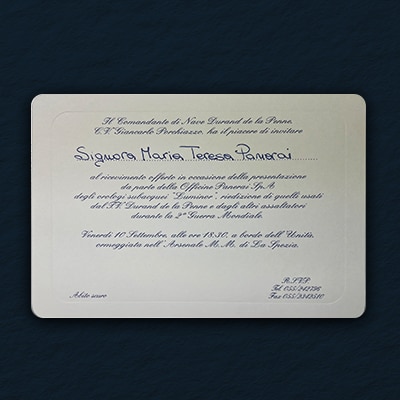
Sent to Mrs. Maria Teresa Panerai, widow of Giuseppe Panerai, this invitation to the 1993 launch reflects the continued bond between Officine Panerai and the Panerai family.
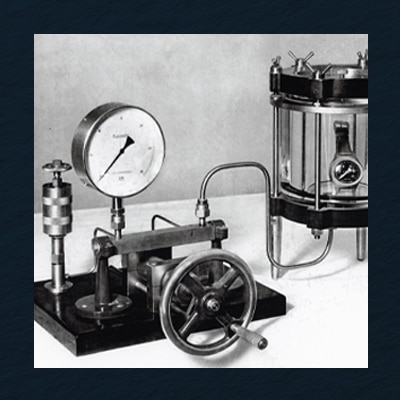
These Panerai’s machines (1960s - mid 1980s) tested both water resistance and pressure integrity: the larger for depth gauges, the smaller for the “Millemetri” watch.
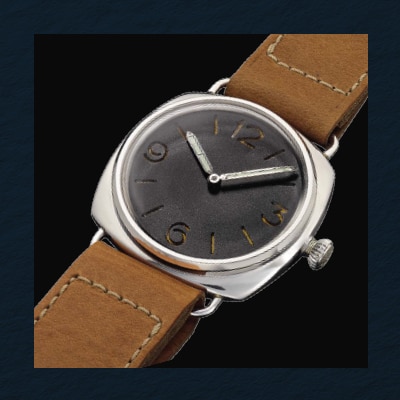
A classic example of a sandwich dial paired with a 47 mm cushion-shaped case, featuring a conical screw-down crown, and wire lugs with a hand-stitched leather strap.
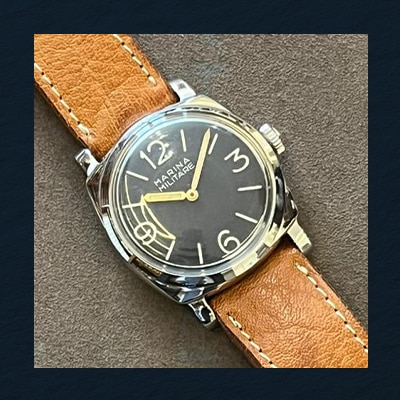
This model, without the crown protecting bridge, features a Cortebert 618 calibre and a through-screw system, a key innovation enhancing strap resistance and replacement.
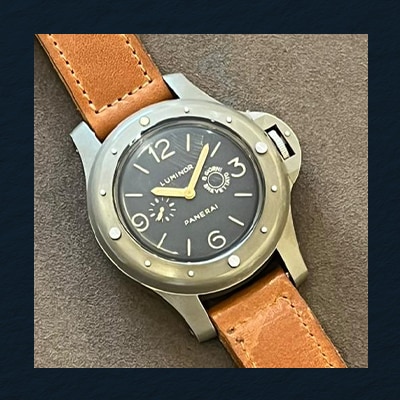
Part of Giuseppe Panerai’s private collection, this GPF 2/56 features a case with anti-reflective coating—designed to let divers read the time without revealing their position.
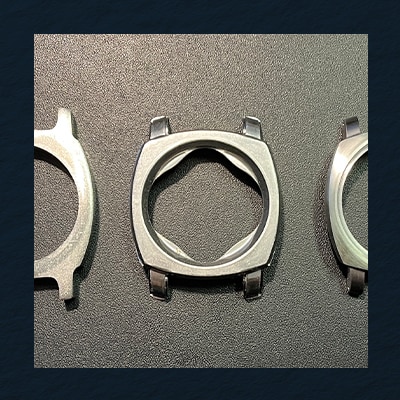
A breakdown of the various construction stages of the Luminor 44 mm case in AISI 316L steel—then the highest quality standard in watchmaking.
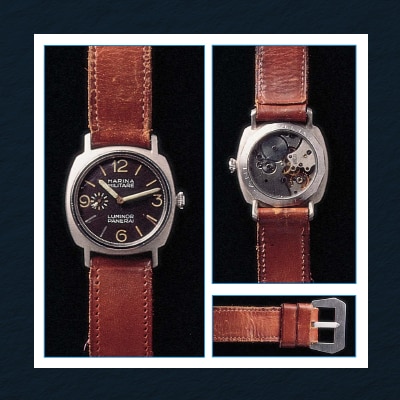
A rare 3646 cushion-shaped case with fixed lugs, early Luminor dial, Angelus SF 240 movement, 8 Days power reserve, small seconds at 9 o’clock, and four-line print layout.
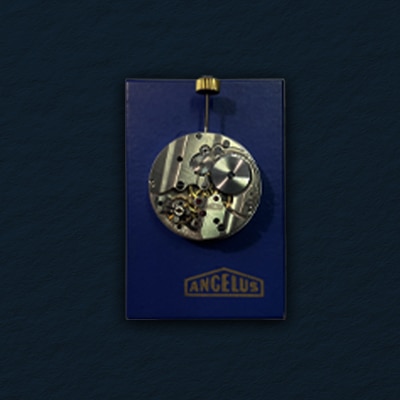
Original Angelus SF 240 8 Days movement box, along with several sets of hands designed to be fitted onto custom shafts made specifically for integration into Panerai cases.
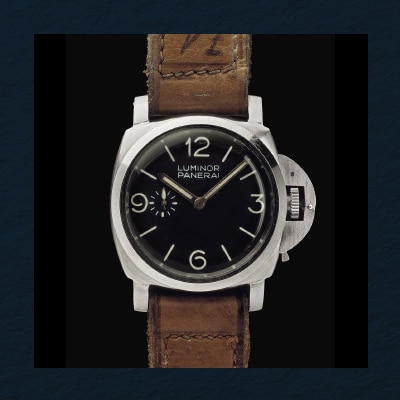
A 6152-1, modified with a crown protecting bridge and the Angelus SF 240, presents a unique crown guard lever adjustable to diver preferences, opening either north or south.
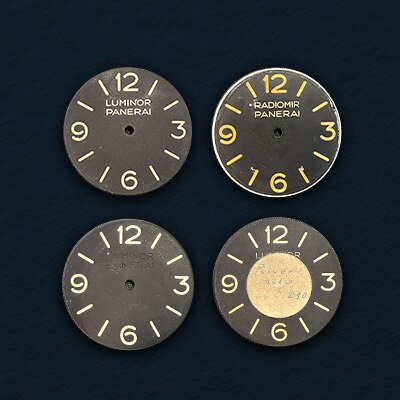
Test dials made in Florence by Guido Panerai e Figlio during the shift from Radiomir to Luminor, used to measure and compare luminous radiation emissions.


